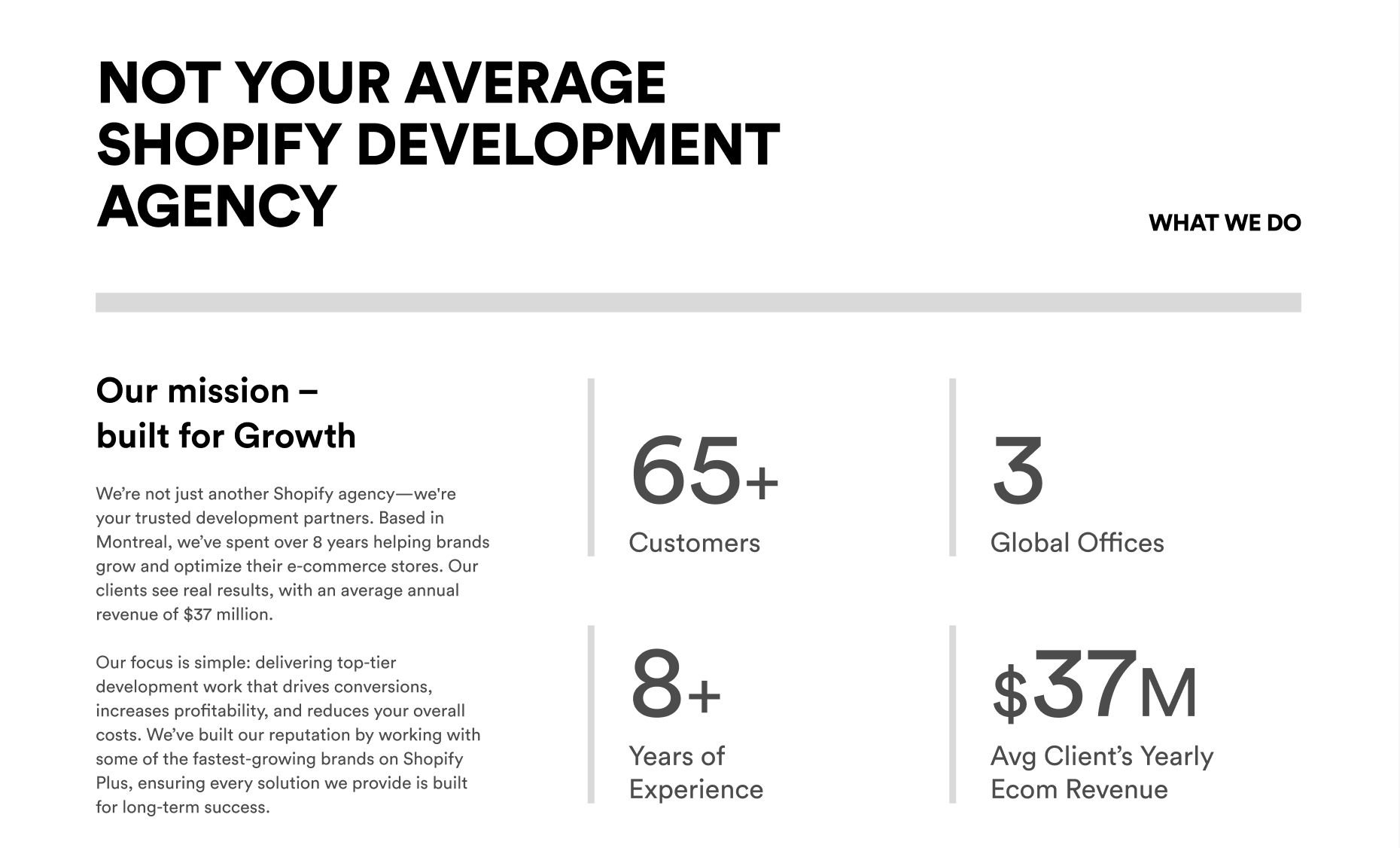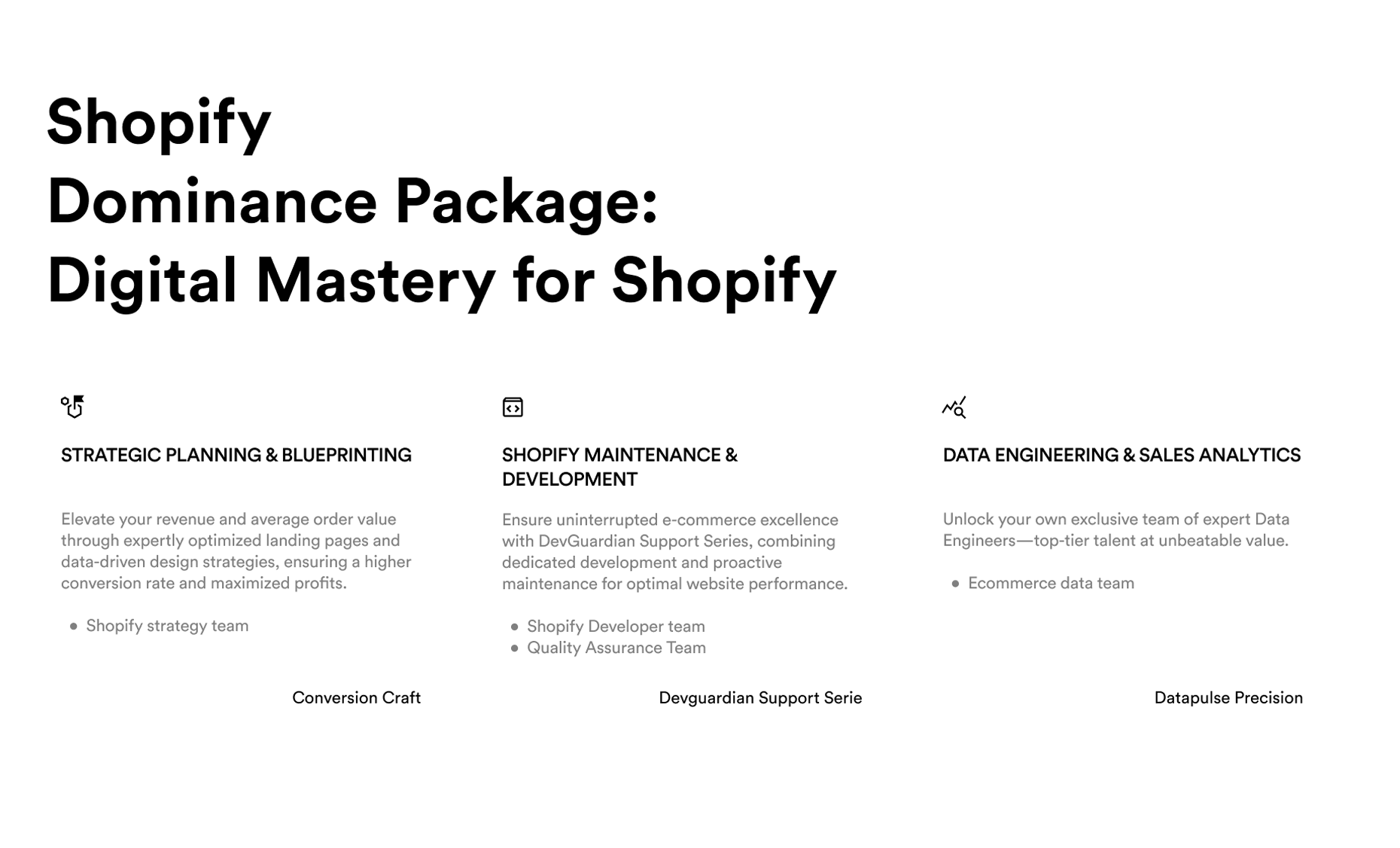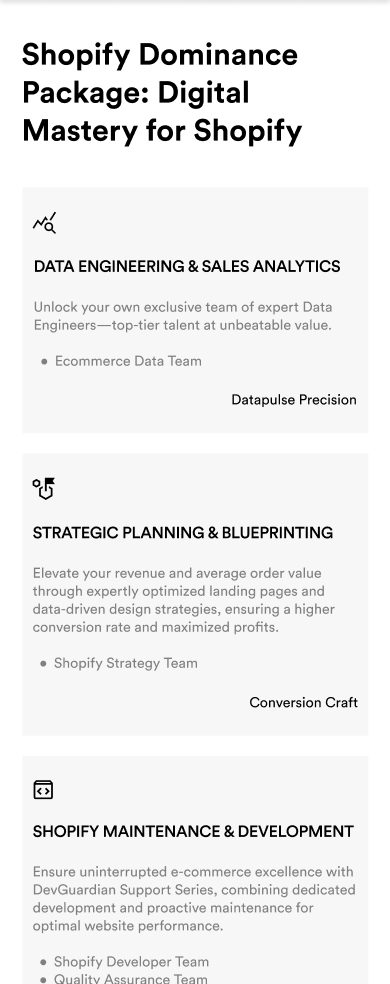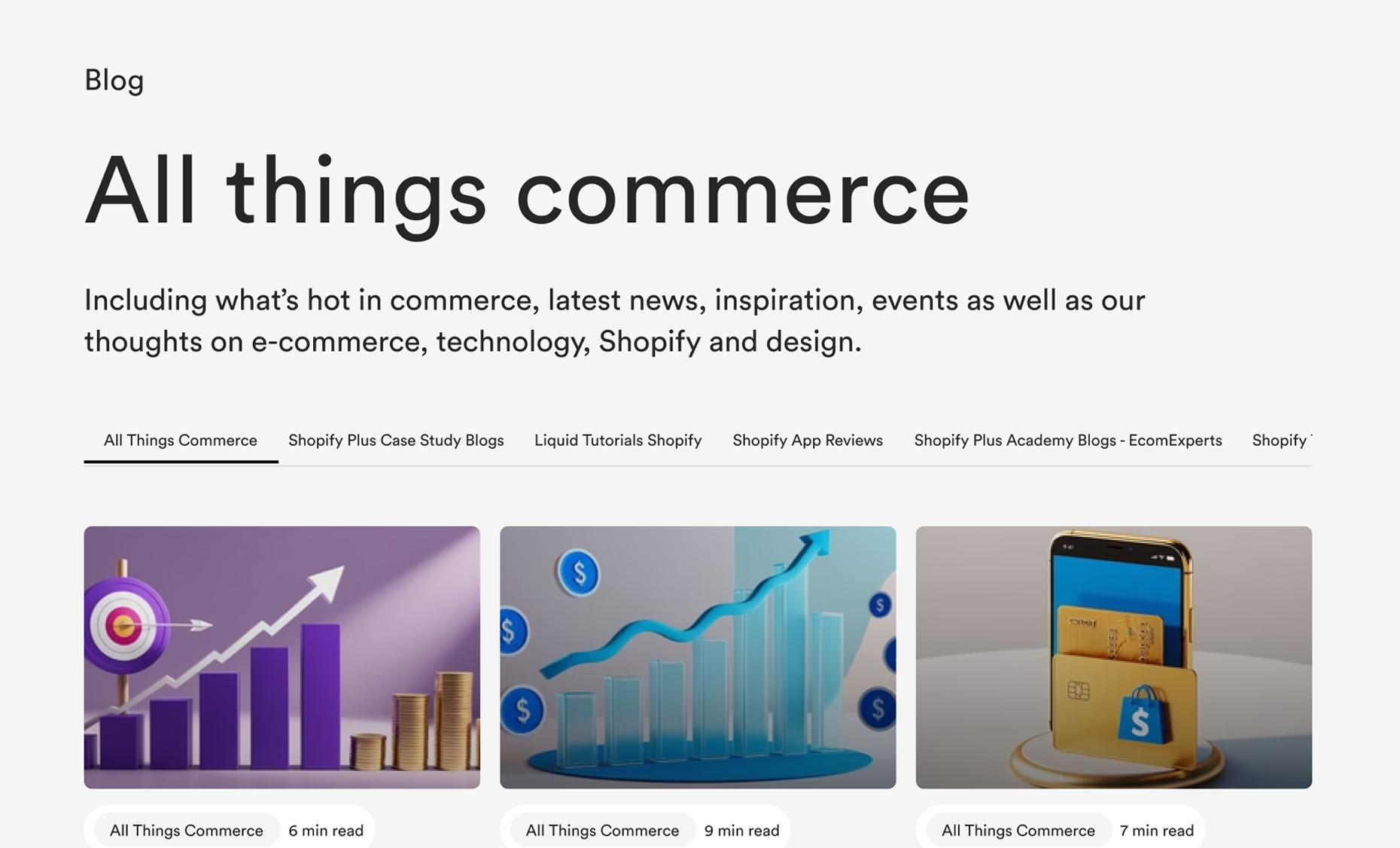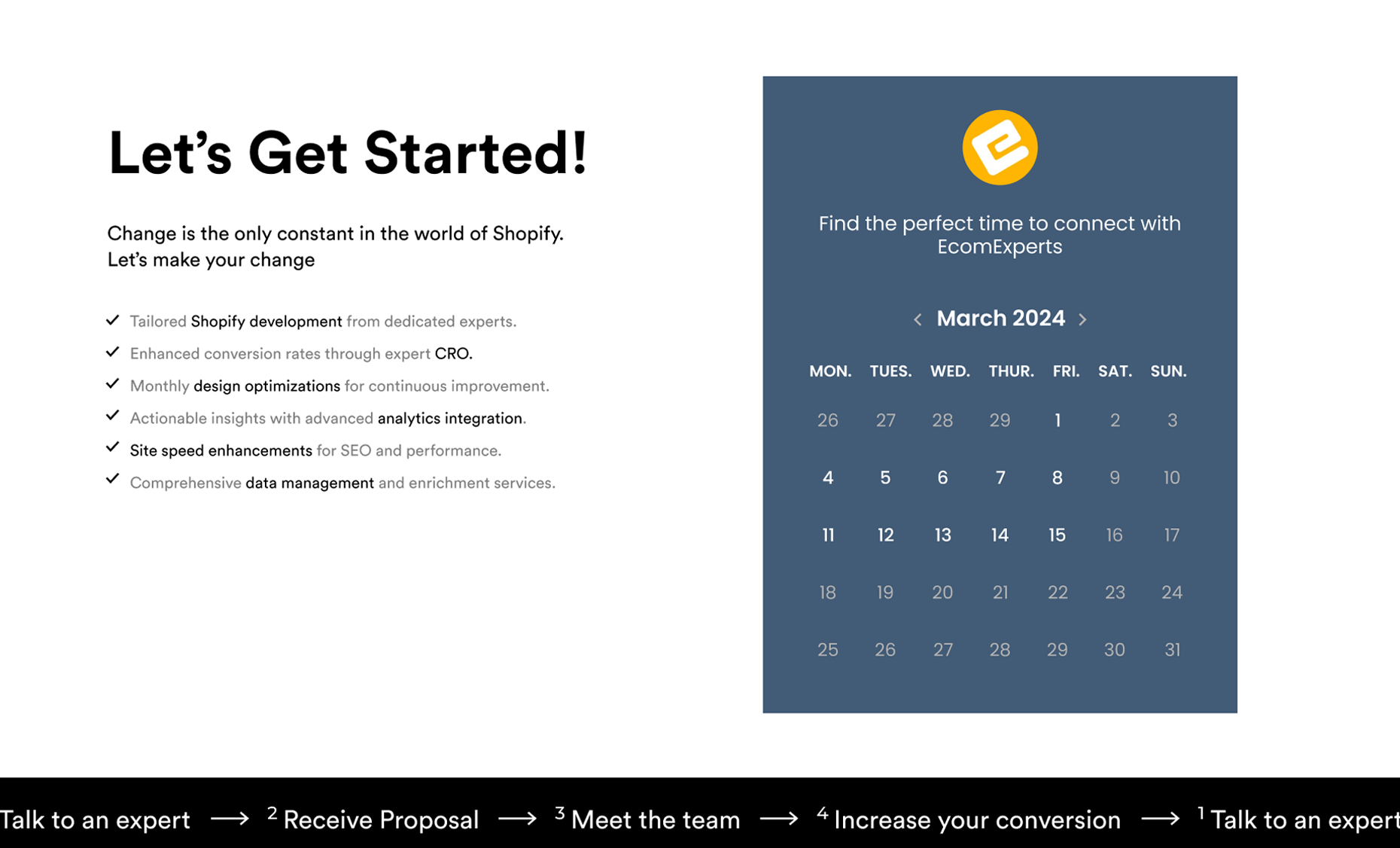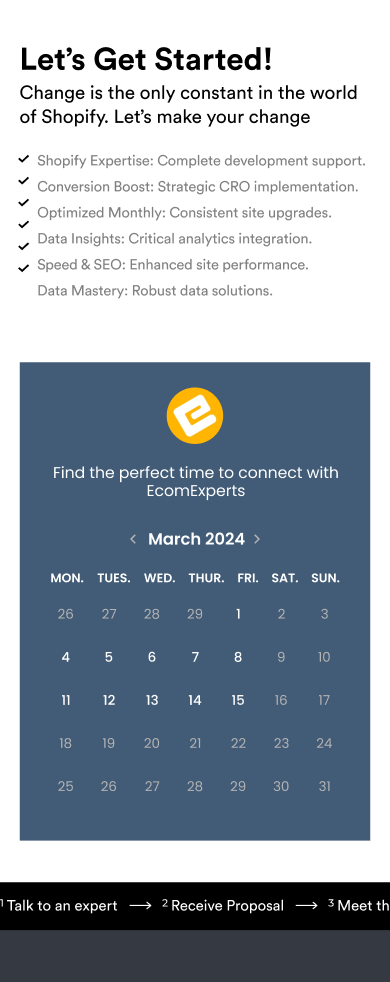The Global Opportunity for Shopify Plus Brands
If you’re a Shopify Plus brand, chances are you’re crushing it in your home market. But let’s get real: growth doesn’t stop at borders. Expanding internationally isn’t just an option anymore—it’s the next big move for scaling brands. And the opportunity? It’s massive.
We’re talking about tapping into entirely new customer bases, building brand recognition on a global scale, and unlocking revenue streams you didn’t even know existed.
But here’s the catch: you can’t just copy-paste your current store and hope it works everywhere. Customers in Tokyo aren’t shopping the same way as customers in New York, and your one-size-fits-all store isn’t going to cut it.
That’s where Shopify Plus multi-storefronts come in. They’re not just a feature—they’re a game-changer.
With multi-storefronts, you can create region-specific stores that feel tailor-made for your customers. Different currencies, languages, localized content—it’s all possible. You’re essentially building a global empire, one market at a time, while staying true to your brand.
Why Multi-Storefronts Matter for Global E-Commerce
Expanding your Shopify Plus brand globally sounds like a dream, right? But here’s the thing: going global isn’t just about reaching more customers—it’s about connecting with them.
And trust me, a one-size-fits-all storefront isn’t going to cut it when your audience spans multiple countries with unique preferences, languages, and shopping habits.
Imagine this: your U.S.-based storefront is thriving, but now you’re getting traction from customers in Germany. Suddenly, they’re frustrated because they can’t see prices in Euros, shipping options don’t match local expectations, and your content feels...off. That friction? It’s enough to make them click away.
This is why Shopify Plus’s multi-storefront capabilities are a game-changer. Instead of forcing customers to adapt to your store, multi-storefronts allow you to adapt to them. Here's what they bring to the table:
- Localization That Resonates: Tailor your store’s language, currency, and even product catalog to match local preferences.
- Regional SEO Domination: With region-specific storefronts, you can target local keywords and improve search rankings for each market.
- Custom Experiences Without the Chaos: Manage multiple stores from a single Shopify Plus dashboard, keeping operations streamlined while offering unique experiences for every customer.
Think of multi-storefronts as your secret weapon for showing up like a local in every market. It’s not just about selling—it’s about building trust, loyalty, and a seamless shopping experience that feels native to every customer, no matter where they’re shopping from.
Setting Up Shopify Plus Multi-Storefronts: A Step-by-Step Guide
So, you’re ready to take your brand global with Shopify Plus multi-storefronts. Let’s break it down step by step so you can create a seamless, localized shopping experience for every region you target.
Step 1: Start with Market Research
Before diving into storefront creation, you need to know who you’re targeting. This step isn’t glamorous, but it’s essential.
- Identify Key Markets: Analyze your existing sales data to pinpoint regions with high potential. Look for traffic sources, existing international sales, or untapped markets that align with your product.
- Understand Regional Preferences: What payment methods do they use? Are there cultural preferences that affect how they shop? For example, customers in Europe prioritize fast, transparent shipping options, while APAC shoppers value mobile-first design.
Pro Tip: Use Shopify Markets insights to gather data on regional purchasing trends and preferences—it’s like having a cheat sheet for global expansion.
Step 2: Leverage Shopify Plus Multi-Storefront Capabilities
This is where Shopify Plus becomes your MVP. Multi-storefronts allow you to manage up to 10 stores under one account, giving you the flexibility to cater to different regions.
-
Setup Process:
- From your Shopify admin panel, create separate storefronts for each region you’re targeting.
- Use Shopify’s cloning tools to quickly replicate your existing store and customize it for specific markets.
-
Why It’s Powerful:
- Each storefront can have its own domain, currency, and language settings.
- You can tailor product offerings to align with local demand—for example, offering winter apparel in Canada while showcasing lightweight options in Australia.
Step 3: Localize Everything
Localization is the secret sauce to winning in global markets.
- Multi-Currency: Activate Shopify Payments and enable multi-currency settings to display prices in local currencies.
- Multi-Language: Use Shopify’s multi-language capabilities or third-party apps like Weglot or Langify to translate your store content.
- Localized Product Catalogs: Adjust product descriptions, sizes, and even visuals to match regional preferences. For instance, use metric measurements in Europe and imperial in the U.S.
Step 4: Optimize for Regional SEO
SEO can make or break your success in international markets. With multi-storefronts, you can dominate local search results by tailoring your content for specific regions.
- Hreflang Tags: Implement hreflang tags to help search engines understand which version of your store to display for specific regions.
- Localized Keywords: Perform keyword research for each market and update meta tags, product titles, and descriptions accordingly.
- Localized Domains: Use country-specific domains (e.g., .de for Germany or .uk for the United Kingdom) to improve local search rankings.
Step 5: Test and Launch
The last thing you want is a broken storefront frustrating your new audience. Test every element before going live.
- Usability Testing: Ensure everything from payment gateways to product descriptions works perfectly for the target audience.
- Analytics Setup: Implement region-specific tracking in Shopify Analytics or Google Analytics to monitor performance and identify areas for improvement.
Setting up multi-storefronts might seem like a big lift, but once you’ve nailed these steps, you’ll have a powerful global e-commerce engine that caters to every market seamlessly.
Optimizing Shopify Plus Multi-Storefronts for Peak Performance
Setting up your multi-storefronts is just the beginning. To truly dominate in global markets, you need to fine-tune every element of your stores for speed, usability, and regional relevance.
Let’s break down how to optimize your Shopify Plus multi-storefronts to maximize performance and conversions.
1. Speed Optimization: Fast Loads, Happy Customers
Slow websites kill sales—especially in international markets where load times can vary due to server locations. A few milliseconds could be the difference between a sale and an abandoned cart.
- Optimize Images: Compress images using tools like TinyPNG or Shopify’s built-in optimizer.
- Leverage Shopify CDN: Shopify automatically uses its Content Delivery Network (CDN) to ensure faster load times worldwide.
- Minimize JavaScript: Streamline your scripts to reduce render-blocking elements, ensuring your store loads smoothly.
Pro Tip: Test your store’s speed with tools like Google PageSpeed Insights or GTmetrix and optimize based on their recommendations.
2. Nail Regional SEO: Get Found in Local Searches
SEO is critical for ensuring your storefronts appear in search results across different regions. It’s not just about translating your content—it’s about optimizing it for the way people search locally.
- Localized Keywords: Research keywords for each market using tools like Ahrefs or SEMrush. For example, “sneakers” in the U.S. might be “trainers” in the UK.
- Hreflang Tags: Implement hreflang tags to signal search engines about language and region-specific content.
-
Localized Domains: Use ccTLDs (country code top-level domains) like
.fror.deto boost trust and relevance in specific regions.
Example: A Shopify Plus apparel brand targeting Germany should optimize their meta descriptions with terms like “Kleidung” or “Mode” to resonate with German shoppers.
3. Ensure Consistent Branding Across Storefronts
Your global customers expect your brand to feel familiar no matter where they are. But consistency doesn’t mean uniformity—it means adapting while staying on-brand.
- Tailor Visuals: Use the same logo and color palette across all storefronts, but tweak imagery to reflect cultural preferences (e.g., seasonal themes or local festivals).
- Tone of Voice: Adjust your tone to match the cultural norms of each region while keeping your brand identity intact.
- Product Alignment: Ensure flagship products are featured globally while still accommodating regional demand.
4. Regional Payment Gateways and Checkout Optimization
When customers can’t pay the way they prefer, they don’t buy—it’s that simple. Make checkout frictionless by integrating regional payment gateways.
-
Popular Gateways:
- Europe: Klarna, Sofort
- Asia: Alipay, WeChat Pay
- Latin America: Mercado Pago
- Localized Taxes and Duties: Use Shopify’s automatic tax calculation features to ensure compliance in each region.
Pro Tip: Simplify the checkout process with a one-page layout and offer guest checkout to reduce cart abandonment.
5. Leverage Analytics to Drive Growth
Data is your secret weapon for identifying what works and what doesn’t in each storefront. Shopify Plus offers robust analytics tools to track performance across regions.
- Track Key Metrics: Monitor conversion rates, bounce rates, and average order value for each storefront.
- A/B Testing: Test different elements—like CTAs, images, and copy—on specific storefronts to see what resonates with each audience.
- Customer Behavior Insights: Use heatmaps and session recordings to understand how customers navigate your site.
Example: If your Canadian storefront sees higher cart abandonment rates, you can tweak your shipping options or payment gateways to address potential pain points.
By optimizing your Shopify Plus multi-storefronts, you’re not just maintaining your global presence—you’re creating a tailored experience that turns first-time visitors into loyal customers.
Common Mistakes to Avoid When Managing Multi-Storefronts
Scaling your Shopify Plus brand globally is exciting, but it’s easy to hit roadblocks if you’re not careful. Managing multi-storefronts comes with its own set of challenges, and avoiding these common mistakes can save you time, money, and a lot of frustration.
1. Ignoring Local SEO
One of the biggest pitfalls is assuming your SEO strategy works universally.
- The Problem: Using the same keywords and meta descriptions across regions won’t resonate with local audiences or search engines.
- The Fix: Conduct localized keyword research for each storefront. Tools like Ahrefs or SEMrush can help identify regional search terms. Use hreflang tags to ensure the right content is displayed for each region.
Example: Optimize your German storefront with keywords like “Kleidung online kaufen” (buy clothes online) instead of generic terms used in English-speaking countries.
2. Overlooking Regional Customer Preferences
Not all customers shop the same way, and ignoring these nuances can alienate your audience.
- The Problem: Offering payment methods or shipping options that don’t align with local expectations.
-
The Fix:
- Integrate popular payment gateways like Klarna in Europe or Mercado Pago in Latin America.
- Adjust shipping methods and delivery times based on regional logistics.
Pro Tip: Conduct customer surveys in new regions to better understand local preferences.
3. Failing to Maintain Brand Consistency
While localization is key, it’s equally important to maintain a consistent brand identity across all storefronts.
- The Problem: Disjointed visuals, tone, or messaging that confuse global customers.
-
The Fix:
- Create a global brand guideline that allows for localization while preserving your core identity.
- Use Shopify Plus’s admin tools to manage assets and templates across storefronts.
4. Overcomplicating Backend Operations
Adding multiple storefronts can quickly turn into a logistical nightmare if not managed properly.
- The Problem: Managing inventory, orders, and customer data manually across regions can lead to errors and inefficiencies.
-
The Fix:
- Use automation tools like Shopify Flow to sync inventory and streamline operations.
- Leverage apps like Stock Sync to ensure your inventory remains updated across all storefronts.
5. Not Testing Storefronts Before Launch
Launching a storefront without testing is like flying blind—it’s risky and can lead to poor customer experiences.
- The Problem: Bugs in translations, incorrect currency displays, or broken checkout processes.
-
The Fix:
- Conduct usability tests for every storefront. Tools like BrowserStack can simulate experiences across devices and regions.
- Ask local teams or partners to review and test the storefronts for cultural and functional accuracy.
6. Neglecting Analytics
If you’re not tracking performance, you won’t know what’s working or where to improve.
- The Problem: Treating all storefronts the same and using blanket metrics to measure success.
-
The Fix:
- Set up regional analytics dashboards to monitor performance for each market.
- Track region-specific metrics like conversion rates, average order value (AOV), and bounce rates.
Key Takeaway
Expanding globally isn’t about perfection—it’s about progress. By avoiding these common mistakes and focusing on continuous improvement, your Shopify Plus multi-storefronts will evolve into a powerhouse for global success.
Maximizing ROI: How to Get the Most Out of Your Multi-Storefront Strategy
Setting up multi-storefronts is a great move, but the real question is: how do you turn this investment into consistent returns?
Let’s break down the strategies that help you not just maintain, but truly maximize the profitability and impact of your multi-storefront setup.
1. Prioritize High-Performing Markets
Not every market will deliver the same results, and that’s okay. Focus your energy and resources on the regions that give you the best returns.
-
How to Identify Them:
- Use Shopify Analytics to track conversion rates, average order value (AOV), and repeat customer rates for each storefront.
- Cross-reference these metrics with customer acquisition costs (CAC) to ensure you’re getting a healthy ROI.
Pro Tip: Scale marketing efforts in high-performing markets and keep experimenting with smaller campaigns in emerging ones.
2. Optimize Your Marketing Funnel for Each Region
Marketing for a multi-storefront setup isn’t just about driving traffic—it’s about driving the right traffic.
- Localized Ads: Create region-specific ad campaigns that resonate with local audiences. Tools like Google Ads and Facebook Ads allow you to tailor campaigns for language, culture, and behavior.
- Email Personalization: Use Shopify Email or third-party apps like Klaviyo to send regionally relevant email campaigns. Include local offers, events, or seasonal promotions.
Example: A holiday campaign promoting Lunar New Year discounts in Asia will outperform a generic “winter sale” message in the same region.
3. Streamline Cross-Border Shipping and Returns
Shipping and returns can make or break customer satisfaction, especially in international markets.
- Simplify Shipping Options: Offer region-specific shipping providers that customers trust (e.g., DHL Express for Europe or SF Express for Asia).
- Transparent Policies: Clearly display shipping costs, delivery times, and return policies for each market to reduce cart abandonment.
4. Upsell and Cross-Sell Strategically Across Storefronts
Maximize the Customer Lifetime Value (CLV) of your customers by introducing upsell and cross-sell opportunities tailored to their market.
- Localized Product Bundles: Combine complementary products into bundles that align with local preferences.
- Seasonal Upsells: Use Shopify Scripts to offer dynamic upsell options based on seasonality and demand in each region.
5. Leverage Automation for Operational Efficiency
Managing multiple storefronts can get overwhelming, but automation tools can help you stay on top of things without breaking a sweat.
- Shopify Flow: Use automation to sync inventory, flag high-value customers, and apply discounts across storefronts.
- Third-Party Tools: Explore integrations like Gorgias for customer support and ReCharge for subscription management to streamline operations.
Pro Tip: Automation isn’t just about saving time—it’s about reducing errors and ensuring a seamless customer experience.
6. Build a Feedback Loop for Continuous Improvement
Your customers are your best resource for understanding what works and what doesn’t.
- Collect Reviews: Use apps like Yotpo to gather product and shopping experience reviews specific to each storefront.
- Analyze Behavior: Dive into analytics to identify drop-off points and optimize accordingly.
- Iterate Constantly: Treat each storefront like a living entity—test, learn, and improve based on data and feedback.
Multi-storefronts are an investment, but the payoff is massive when managed effectively. By focusing on high-performing markets, optimizing your marketing funnel, and streamlining operations, you can turn each storefront into a revenue-generating powerhouse.
Your Multi-Storefront Journey Starts Here
Scaling your Shopify Plus brand globally isn’t just about adding more storefronts—it’s about building meaningful connections with your customers, no matter where they are.
Each storefront isn’t just a website; it’s an opportunity to speak your customers’ language (literally), understand their needs, and create experiences that feel tailor-made.
But let’s be honest—global expansion is no small feat. From managing multiple currencies to nailing regional SEO, it’s a balancing act that requires the right tools, strategy, and mindset.
That’s why Shopify Plus multi-storefronts are a game-changer. They’re not just a feature; they’re your competitive edge in a world where e-commerce is increasingly borderless.
Why It’s Time to Act
- The Market is Ready: Cross-border e-commerce sales are projected to hit new highs in 2025. The sooner you optimize your multi-storefront strategy, the faster you can capture these opportunities.
- Your Customers Expect More: Today’s shoppers want localized experiences that feel personal and intuitive. A generic store won’t cut it anymore.
- You Have the Tools: Shopify Plus provides everything you need—from seamless integrations to automation tools—to scale without losing your mind.
Let’s Simplify Your Next Steps
- Start with a Plan: Identify your target markets, define your goals, and map out your storefront strategy.
- Leverage the Right Tools: Use Shopify’s built-in features like Shopify Markets and Flow to simplify setup and operations.
- Focus on Optimization: Test, analyze, and refine your storefronts regularly to ensure they’re delivering results.
Going global isn’t about being everywhere—it’s about being where it matters most. Focus on creating exceptional experiences in the markets that align with your brand’s vision, and you’ll not only drive sales but also build long-lasting customer relationships.




